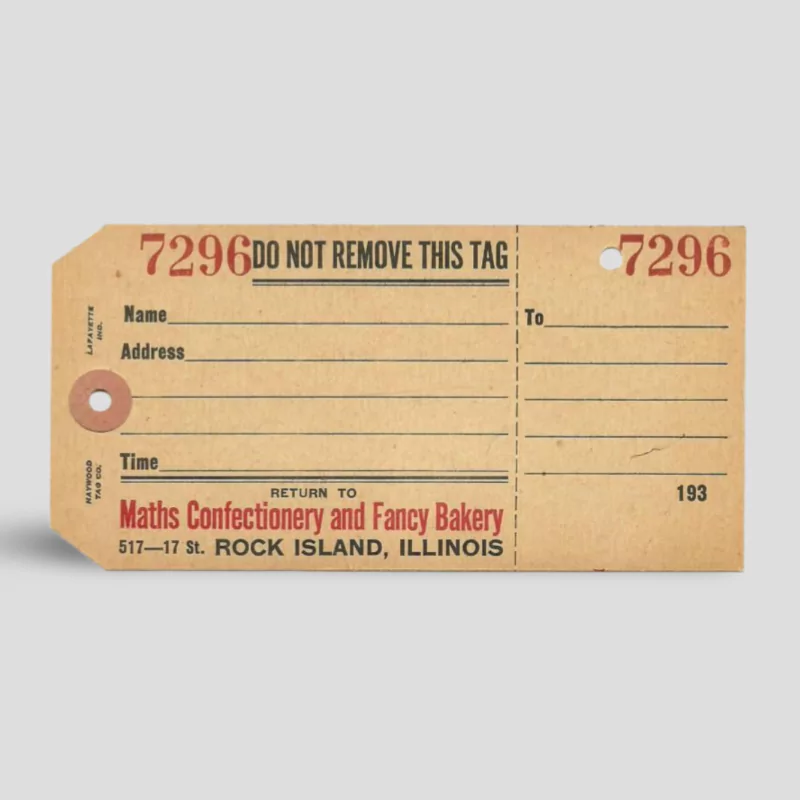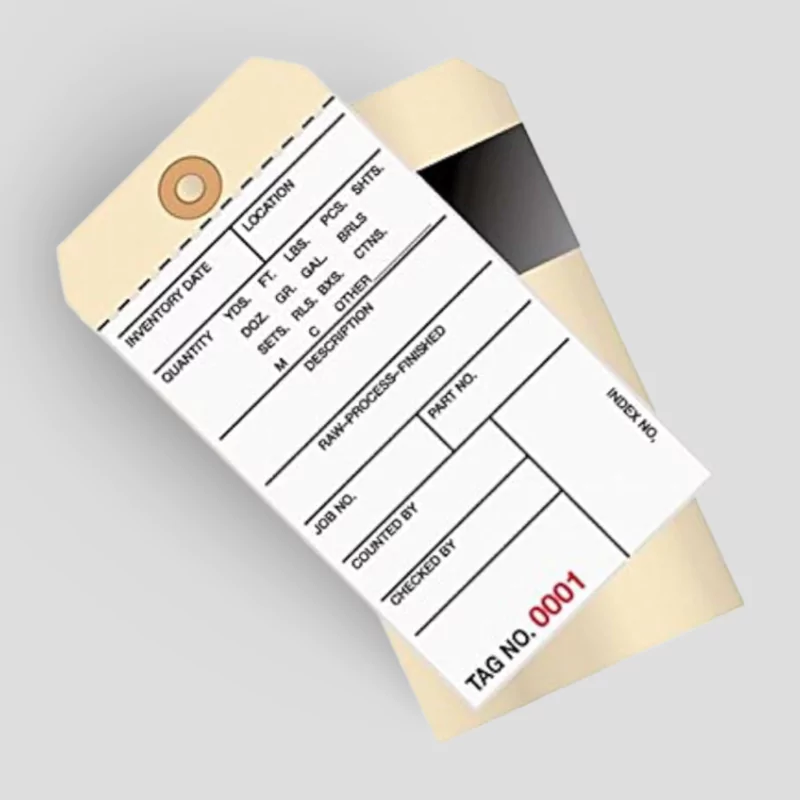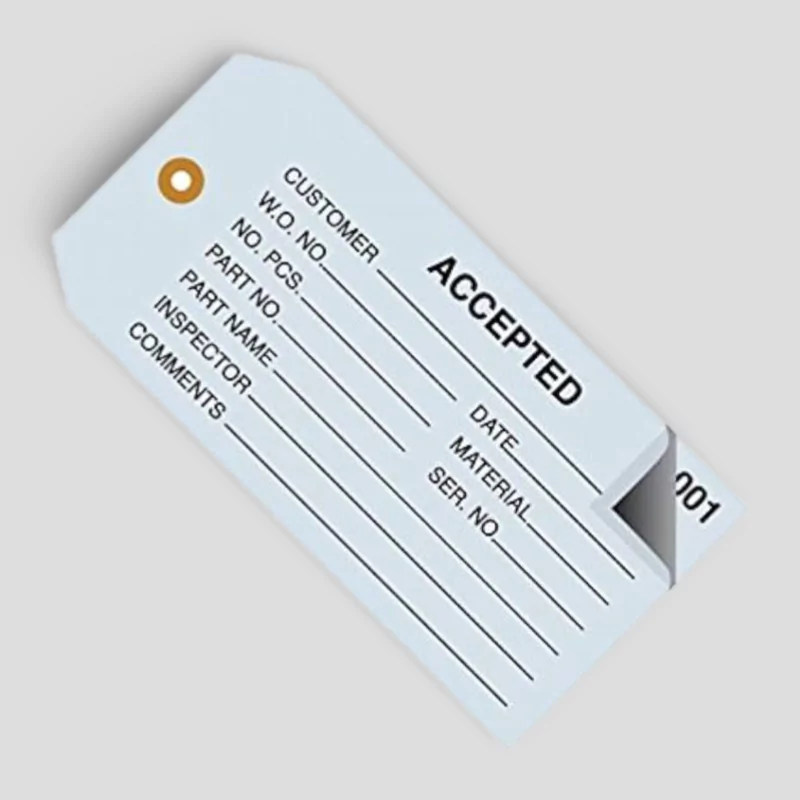Shipping Tags: Reliable Identification for Every Package
Effective shipping and inventory management starts with quality tags that stay attached and legible throughout handling and transit. Our shipping tags combine durable construction with practical design, providing reliable identification for packages, products, and inventory items. Whether running a warehouse, e-commerce business, or retail operation, proper tagging prevents errors, improves organization, and streamlines logistics operations.
Product Overview
Our shipping tags are manufactured from sturdy materials designed to withstand the rigors of shipping and handling. Reinforced eyelet holes prevent tearing when attached to packages or products. Smooth writing surfaces accept pen, marker, or printer ink clearly. Choose from standard manila tags for general use, colored tags for visual organization systems, or waterproof synthetic tags for challenging conditions. Available in wholesale quantities from small business packs to bulk commercial orders, our tags provide reliable identification at prices that work for operations of any size.
Key Features & Benefits
Durable Construction: Heavy-duty paperboard or synthetic materials resist tearing, folding, and damage during handling and shipping.
Reinforced Eyelets: Metal-reinforced holes prevent tearing when tags are attached with string, wire, or zip ties—staying secure throughout transit.
Clear Writing Surface: Smooth finish accepts handwriting, stamps, and printed labels clearly. Information stays readable throughout the shipping process.
Multiple Attachment Options: Pre-strung tags with wire or string for immediate use, or plain tags allowing you to choose your preferred attachment method.
Size Variety: Multiple dimensions available to match your specific needs—from small inventory tags to large shipping labels.
Color Coding Available: Different colors enable visual organization systems, priority levels, or department identification at a glance.
Customization Options
Material Types: Classic manila cardstock for standard applications, colored cardstock for visual sorting, waterproof synthetic for weather exposure, or tyvek for tear-resistant durability.
Standard Sizes: #1 (2.75″ x 1.375″) for small items, #4 (4.25″ x 2.125″) for standard shipping, #5 (4.75″ x 2.375″) for larger packages, #8 (6.25″ x 3.125″) for maximum information space.
Color Options: Natural manila for traditional use, white for clean appearance, bright colors (red, blue, green, yellow) for color-coding systems, or fluorescent for high visibility.
Attachment Methods: Pre-strung with wire for secure attachment, cotton string for economical use, plain tags without string for custom attachment, or adhesive-backed for stick-on application.
Printing Options: Blank tags for handwriting, pre-printed with your logo and company information, numbered tags for inventory tracking, or custom printed with specific fields and barcodes.
Eyelet Options: Standard reinforced metal eyelets, plastic grommets for lighter applications, or reinforced fiber for paper-only construction.
Special Features: Perforated sections for receipts or claim checks, multi-part carbonless for record keeping, or laminated coating for extra protection.
Industries & Applications
Our shipping tags serve essential functions across many sectors:
- E-commerce & Fulfillment: Package identification, order tracking, shipping labels for online retail operations
- Warehousing & Distribution: Inventory management, location tracking, product identification in storage facilities
- Manufacturing: Work-in-process tracking, quality control, production routing through manufacturing stages
- Retail Operations: Price tags, sale markers, inventory counts, stockroom organization
- Transportation & Logistics: Freight identification, delivery routing, carrier instructions for shipping companies
- Asset Management: Equipment tracking, maintenance schedules, tool identification for facilities
- Events & Conferences: Registration tags, coat check systems, equipment tracking for event management
- Healthcare: Sample identification, patient belongings, equipment tracking in medical facilities
Why Quality Tags Matter
Prevent Shipping Errors: Clear, durable tags ensure packages reach correct destinations by maintaining legible information throughout transit.
Improve Organization: Color-coded systems and clear labeling streamline warehouse operations and reduce time spent searching for items.
Reduce Losses: Securely attached tags with clear identification minimize lost packages and misplaced inventory.
Enable Tracking: Numbered or barcoded tags create accountability and traceability throughout your supply chain.
Professional Appearance: Quality tags with custom printing enhance brand image and demonstrate operational professionalism.
Cost-Effective Solution: Affordable per-unit pricing makes proper tagging accessible even for high-volume operations, preventing costly errors.
Frequently Asked Questions
Q: What size shipping tag should I use?
A: Size #4 (4.25″ x 2.125″) works for most standard shipping applications. Larger packages or those requiring more information may need #5 or #8. Small items or inventory use smaller #1 or #2 sizes.
Q: Are pre-strung tags better than plain tags?
A: Pre-strung tags offer convenience and time savings, especially for high-volume operations. Plain tags provide flexibility in attachment method and cost slightly less if you have preferred fasteners.
Q: Can shipping tags withstand weather exposure?
A: Standard manila tags handle light moisture but not extended weather exposure. For outdoor use or wet conditions, choose waterproof synthetic or tyvek tags specifically designed for weather resistance.
Q: What’s the minimum order quantity?
A: Plain stock tags available in boxes of 100-1,000 depending on size. Custom printed tags typically require minimums of 500-1,000. Wholesale pricing improves significantly at higher quantities.
Q: Can you add barcodes to shipping tags?
A: Yes! We can print barcodes, QR codes, sequential numbering, or variable data on custom tags for inventory tracking and automated scanning systems.
Q: How do I choose between wire and string attachment?
A: Wire provides stronger, more secure attachment for heavy items or rough handling. String works well for lighter packages and costs less. Choose based on your specific shipping conditions.
Streamline Your Operations Today
Effective logistics start with reliable identification. Quality shipping tags prevent errors, improve organization, and keep operations running smoothly. Stop dealing with torn tags, lost information, and shipping mistakes. Request a free quote and sample pack today to test material quality, evaluate sizes, and explore custom printing options for your business needs. Contact us for wholesale pricing that makes professional shipping tags affordable for operations of any scale. Tag it right the first time, every time.






































